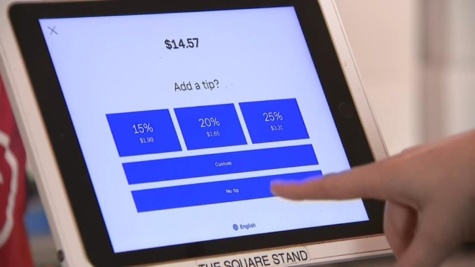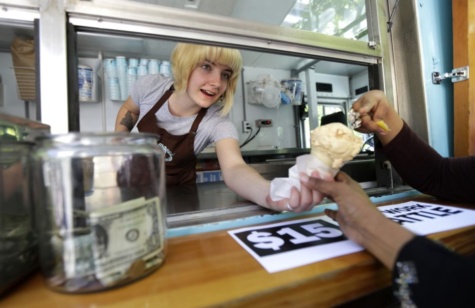
Sophie Rapeepat | Writer
February 21, 2023
Imagine going to your favorite cafe or eatery, ordering a quick coffee or pizza, and then the cashier spins around a touch screen, staring at you with expectant eyes. At this point you have a few options: you can either select one of the designated tip amounts – usually 15%, 18%, and 20% – or, you can choose “no tip” and brace yourself against the judgemental looks from the impatient customers behind you and the insulted cashier.
With increasing technology and a growing cashless society, almost all of us have experienced similar situations when pitted against the digital tipping jar. Though it’s technically the same concept as an old-fashioned cash jar, digital tipping is more intrusive as it pressures customers to contribute gratuity no matter their actual desires. Rather than the appreciative gesture tipping used to be, many now consider it a compulsory expectation.
Just as junior Ava Martinez stated, “unless you’re at a restaurant and a server is helping you, there really should be no pressure to tip, especially if you’re just getting a quick bite somewhere. Tipping is a “thank you” to good staff, not an obligation every time you shop.”
So why have businesses switched to this new system?
It’s estimated that tips can account for 70% of some restaurant workers’ total income. Traditionally, customers have always taken pride in tipping restaurants, in which workers are typically paid less than minimum wage with the expectation that the difference will be made up in tips. The new digital system obviously has created an influx of tipping, which increases income as people feel pressured to give more money more often. Of course, this is beneficial for waiters and waitresses who have worked hard to juggle customers and keep them happy. Also, it’s more convenient to keep money digital as it makes it easier for businesses to pay staff and split tips, especially with the growing cashless society.

But is it morally right to put pressure on customers for extra money?
It may be understandable to implement digital tipping in restaurants, but what about the automatic tip requests in places where tipping is not usually expected? For example, coffee shops and counter service eateries usually pay workers minimum wage with little customer service involved. Many people feel irritated when a tip is automatically asked for in such an aggressive way, especially when the service is limited.
There’s no doubt that digital tipping jars take advantage of people psychologically to some extent. However, at the end of the day, tipping is still a choice. It’s the same as it has always been, except with a little twist. So next time you face the digital tip jar, know that you’re not alone in the pressure, and don’t be afraid to make a decision based on your own judgment.

Leave a Reply